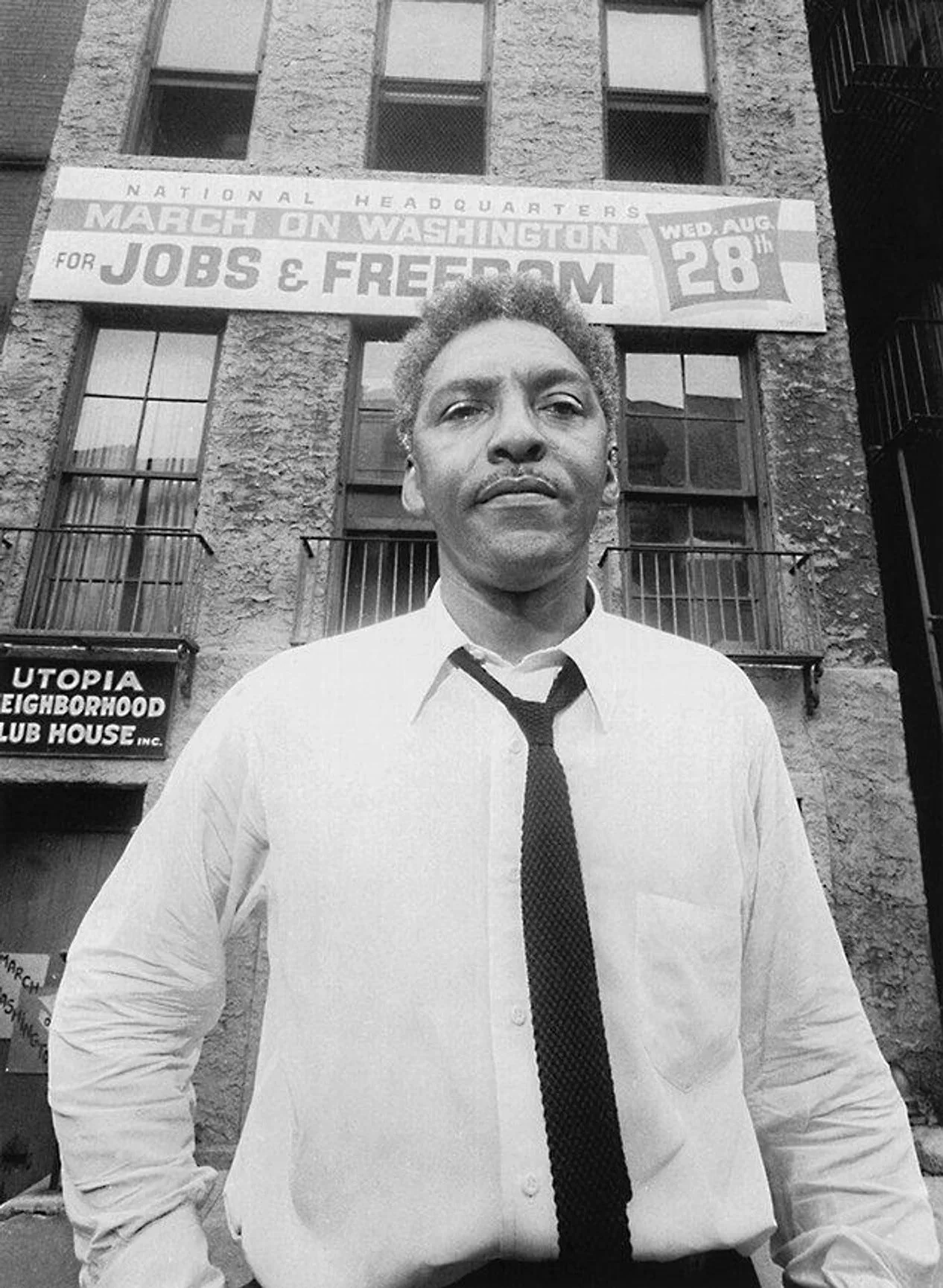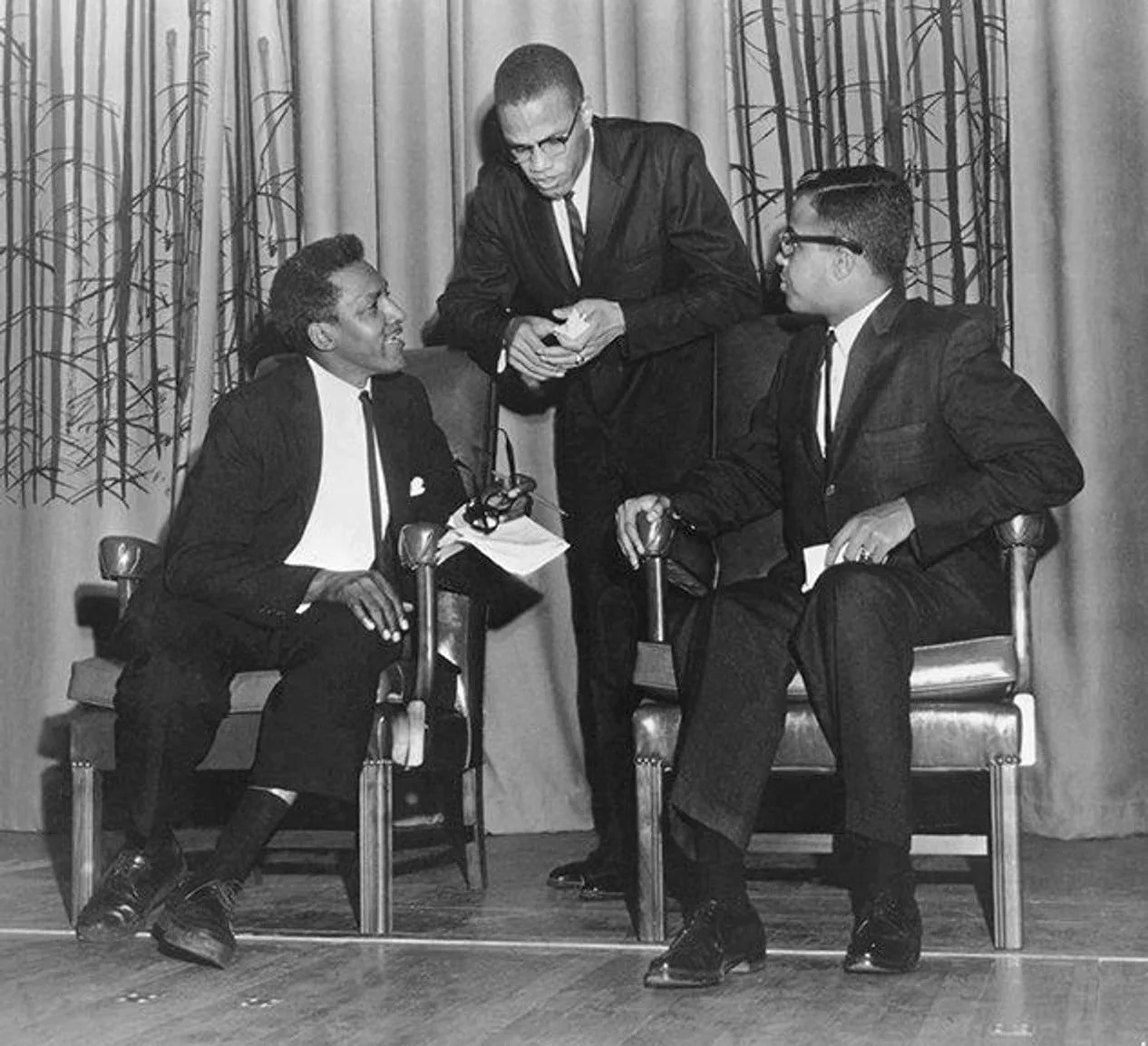In this 1964 pamphlet, Tom Kahn, a protégé of Bayard Rustin, argued that the Civil Rights movement must prioritize economic liberation as a core aspect of comprehensive social change, reflecting their shared vision for addressing deeper systemic inequalities.
Rustin and Author James Baldwin Calling on President Kennedy to Intervene in Alabama
Bayard Rustin and James Baldwin stand side by side, holding an armband inscribed “Birmingham Children” during a protest urging President John F. Kennedy to deploy federal troops to Alabama in response to Governor George Wallace’s militant resistance to desegregation. The armbands honored the memory of African-American children murdered in Birmingham, reinforcing the urgent demand for federal protection of civil rights.
With the March on Washington Less Than a Month Away, Rustin Poses in Front of the National Headquarters Office (August 1, 1963)
Bayard Rustin stands outside the National Headquarters for the March on Washington for Jobs and Freedom, located on West 130th Street in New York City, just weeks before the historic demonstration. The iconic headquarters sign looms overhead, signaling the urgency and scale of preparations underway for one of the most pivotal events in American civil rights history.
This moment documents the relentless groundwork of movement organizing that preceded the landmark demonstration on August 28, 1963. At this time, Rustin and fellow strategists worked from New York’s Harlem—far from the spotlight—to coordinate transportation, logistics, and coalition-building for a multi-racial march with unprecedented scope. Behind the scenes, Rustin navigated deep tensions within the civil rights movement, including doubts about his visibility due to homophobia and red-baiting, as well as skepticism from activists who questioned whether mainstream, nonviolent organizing could confront entrenched Southern resistance. The image stands as testament to the labor, negotiation, and resilience required to transform a local mobilization hub into the strategic nerve center of one of the largest mass protests in U.S. history.
Advocate.com Editors. 2023. “Bayard Rustin’s Life and Civil Rights Legacy in Photos.” Advocate.Com, November 17, 2023. https://www.advocate.com/slideshow/2019/1/21/bayard-rustins-life-and-civil-rights-legacy-photos#rebelltitem3.
Taking a Break with Malcolm X and Michael R. Winston at Howard University, 1961.
*Please note: The exact date of this photograph is unknown.
Bayard Rustin sits to the left alongside Malcolm X, who stands in the center, and debate moderator Michael R. Winston at Howard University. This photograph captures a moment during a pivotal 1961 event where these prominent figures engaged in dialogue connecting the struggles for civil rights and Black empowerment in America.
In October 1961, Howard University hosted a significant debate featuring Bayard Rustin and Malcolm X, moderated by Michael R. Winston, a noted historian and administrator. The gathering symbolized a meeting of two towering leaders—Rustin, renowned for his advocacy of nonviolent resistance, and Malcolm X, a champion of Black self-determination and direct action. Their exchange reflected divergent philosophies in the movement, fostering intense discussion on the future of social justice strategies in the United States.
Advocate.com Editors. 2023. “Bayard Rustin’s Life and Civil Rights Legacy in Photos.” Advocate.Com, November 17, 2023. https://www.advocate.com/slideshow/2019/1/21/bayard-rustins-life-and-civil-rights-legacy-photos#rebelltitem3.



